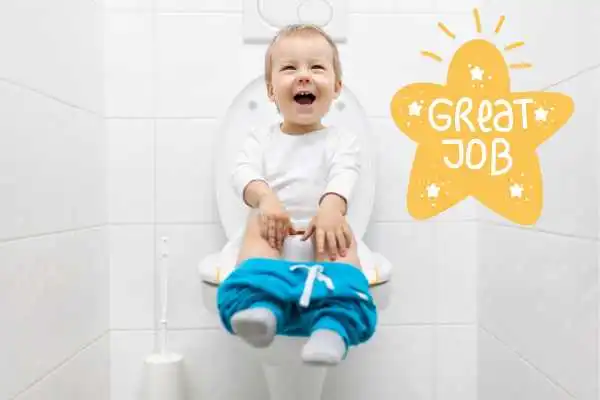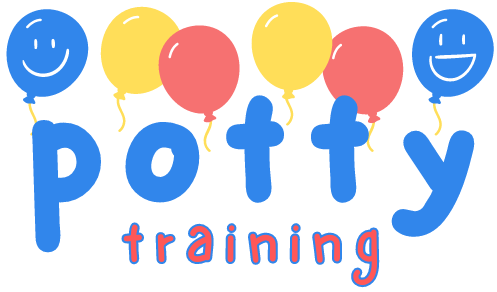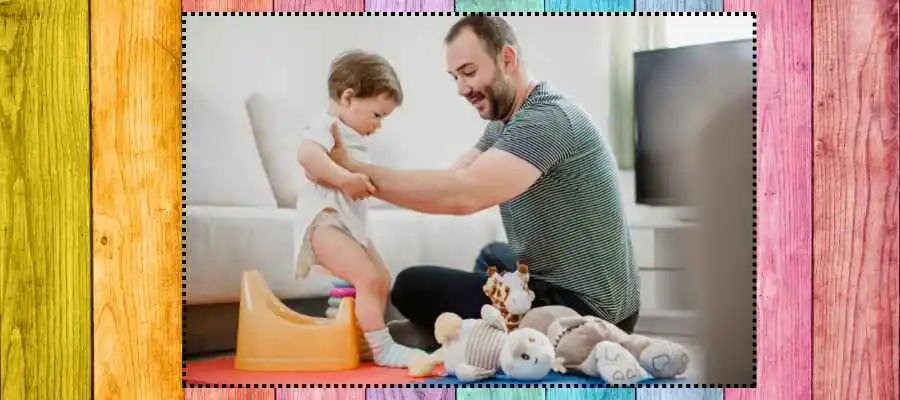Potty training is a significant milestone for toddlers and a monumental task for parents. While it can be an exciting time, it can also be filled with stress and uncertainty. In this article, I will help you understand what to expect and offer tips to make the potty training journey a smoother experience for everyone involved. Here’s everything you need to know about potty training, from preparing to recognizing when it’s time to start.
Table of Contents

The Right Method
In the past, potty training often involved a system of rewards and celebrations for every successful trip to the bathroom. However, contemporary approaches focus more on gentle parenting techniques and understanding child development. It’s about fostering internal motivation in children and supporting their growth through encouragement and praise, rather than relying on external rewards.
One of the key things I learned is that potty training today is more about making your child feel proud of their achievements. This approach can reduce stress for both the child and the parents, making the whole process more enjoyable.
The Right Time
Many parents feel pressured to start potty training at a specific age, often around two years old. But here’s the truth🤫 every child is different, and there’s no “perfect” age to begin potty training. Instead, you should watch for signs of readiness, such as your child showing interest in using the toilet or indicating when they need a diaper change.
I’ve written a detailed article on recognizing when your child is ready for potty training. Take a look!
In my case, we introduced the potty when my son was about 28 months old, but we didn’t start serious training until he was 32 months old. We took a gradual approach, letting him become familiar with the potty and its purpose before expecting him to use it consistently. This helped reduce anxiety and made the transition smoother when we decided to start formal potty training. Potty training expectations should align with your child’s readiness, not an arbitrary timeline.
Gathering the Right Potty Training Supplies
Being prepared with the right supplies is essential for successful potty training. Here’s a list of must-haves:
⭐Potty Seat: A small, portable potty is ideal for toddlers who need quick access to a toilet. We used the Lywood Jonathan Potty, which is lightweight and easy to carry around the house or even to the car.
⭐Underwear: Choose a size or two larger than your child’s regular size to avoid discomfort. This can help reduce accidents since tighter underwear can feel like a diaper and lead to confusion.
⭐Travel Potty Seat: Public restrooms can be intimidating for toddlers. A portable potty seat that fits onto public toilets can make the experience less daunting. We also used stickers to cover the sensors on automatic flush toilets to avoid loud noises that might scare our son.
⭐Entertainment for Potty Time: Keeping your child occupied while they sit on the potty is crucial. Sensory bins, books, or special toys can make the waiting period more enjoyable and stress free for you.
Potty Training Challenges
Even with the best preparation, challenges are bound to arise. One common issue is regression, which can occur unexpectedly. In our case, regressions seemed to happen when my husband and I were busy or preoccupied, leading to fewer one-on-one interactions with our son. This lack of attention often resulted in accidents, which could be frustrating after a period of success.
Do check out my article on how to potty train a stubborn👊🏻 child
To address this, we increased our focus on one-on-one time, ensuring our son felt valued and supported. Consistent attention and encouragement can help minimize regressions and keep the potty training process on track.
Another challenge is dealing with accidents. It’s essential to stay calm and composed when accidents happen. Our approach was to gently remind our son that pee goes in the potty, not on the floor, without showing frustration. This calm response helped reduce stress for both us and our son, allowing us to focus on progress rather than setbacks.
Hand washing can also be a surprise challenge. Kids often enjoy playing with water, turning a quick hand wash into an extended play session. We addressed this by allowing extra time for hand washing and encouraging our son to explore water safely without rushing him.
Successful Potty Training Tips
Based on my experiences, here are some additional tips for successful potty training:
✔ Support System: Having multiple adults at home during the initial potty training days can be a game-changer. We took advantage of a holiday weekend when my husband and I were both home, and my mother-in-law also came to help. This support system made it easier to manage the process and reduced stress.
✔ Communication: Establish a code word or signal that allows parents to swap roles when one needs a break. This can help maintain a calm environment and prevent frustration from building up.
✔ Nighttime Potty Training: Recognize that nighttime potty training requires a different approach. Kids may not develop the bladder strength to stay dry during sleep until they’re about five years old. Use pull-ups or “sleep undies” for naps and nighttime to avoid undue pressure on your child.
Potty Training Expectations
It’s essential to set realistic expectations for potty training. While some children may quickly adapt to using the potty, others might need more time. Understanding that each child is unique and respecting their individual journey is key to a successful experience.
Remember that potty training is a process, and there will be ups and downs along the way. Give yourself and your child plenty of grace, and don’t be afraid to seek support from other parents or professionals if needed.
Final Thoughts
Potty training might seem overwhelming at times, but remember that it will eventually come to an end. Even if you face setbacks or unexpected challenges, your child will learn to use the potty, and this stage of early parenthood will be over. Stay positive, patient, and supportive, and know that you’re not alone on this journey.
I hope this article has provided valuable insights and tips to help you navigate potty training with confidence. Focus on your child’s readiness, embrace flexibility, and keep the end goal in mind. Good luck, and remember to enjoy the small victories along the way!

